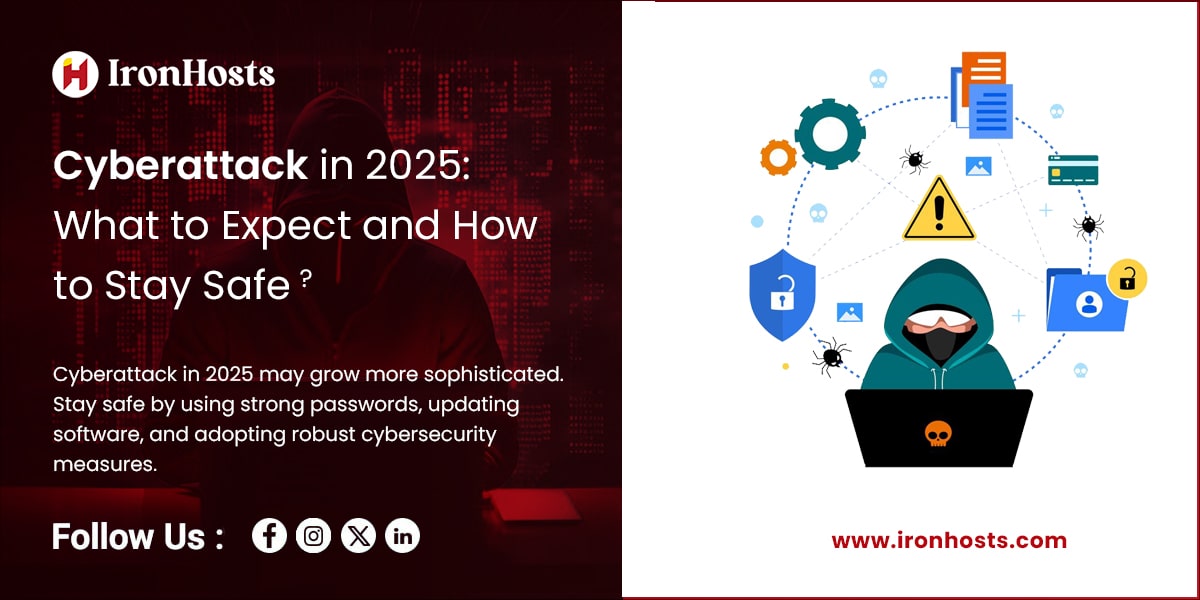What is a Cyberattack?
Simply put, a cyberattack is any malicious activity that targets computer systems, networks, or devices to steal data, disrupt services, or cause damage. Cyberattacks are carried out by cybercriminals, hackers, and even state-sponsored entities. These attacks can target anything from personal data to critical infrastructure.
Cyberattacks today are becoming more diverse. they steal your credit card information, cause a data breach, or take down an entire organization’s network. But what exactly happens during a cyberattack? A common attack typically involves exploiting weaknesses in software or systems to gain unauthorized access and compromise data.
As technology continues to advance, the opportunities for hackers grow as well. Several factors contribute to the rising frequency of cyberattacks:
- Digital Transformation: As businesses and individuals move more activities online, the number of potential targets for cybercriminals increases.
- Increased Use of IoT Devices: Smart devices connected to the internet are vulnerable points in cybersecurity.
- Cybercrime as a Business: Hackers and criminal organizations have increasingly professionalized their operations, making it easier to launch sophisticated attacks.
Types of Cyberattacks to Expect in 2025
As we move into 2025, certain cyberattack types become more prevalent. These include:
1. Phishing Attacks
2. Ransomware
3. Advanced Persistent Threats (APTs)
APTs are long-term, targeted attacks typically carried out by highly skilled cybercriminals. These attacks are stealthy, and hackers usually focus on gathering information over an extended period before taking action.
4. Distributed Denial of Service (DDoS)
In a DDoS attack, cybercriminals flood a website or network with massive traffic, causing it to become overwhelmed and crash.
5. Insider Threats
Not all cyberattacks come from outside an organization. Insider threats occur when current or former employees intentionally leak sensitive information or damage company systems.
6. Supply Chain Attacks
Hackers can infiltrate a company’s supply chain to compromise software or hardware used by the target. This kind of attack can be detected until significant damage is done.
Emerging Threats in Cybersecurity for 2025
The growing threat landscape in 2025 is also influenced by emerging technologies:
1. AI-Powered Cyberattacks
Artificial intelligence is making it easier for cybercriminals to launch more sophisticated and automated attacks. AI can analyze data patterns, predict weaknesses in systems, and deploy attacks more efficiently.
2. Cyberattacks on Critical Infrastructure
Attacks on vital sectors such as healthcare, energy, and finance could have severe consequences. These types of attacks could result in widespread disruption, affecting entire regions.
3. Cloud Security Risks
As more businesses migrate to cloud-based systems, the risks of cloud security breaches also rise. Hackers are targeting cloud services to exploit weaknesses in these platforms.
Cyberattack USA: What’s at Stake?
In the USA, cyberattacks pose a significant threat to both national security and the economy. In recent years, there has been a surge in cyberattacks targeting government agencies, businesses, and even individuals. These attacks can disrupt essential services, steal sensitive data, and cause significant financial damage.
The cyberattack USA threat is particularly concerning due to the country’s role in global politics and its large economy.
How to Protect Yourself from Cyberattacks Today
Cybersecurity isn’t just for businesses and governments it’s something everyone needs to be aware of. Here are a few simple yet effective ways to protect yourself from cyberattacks:
1. Use Strong, Unique Passwords
2. Regular Software Updates
Hackers often exploit security vulnerabilities in outdated software. Ensure your devices and apps are regularly updated with the latest security patches to protect against vulnerabilities.
3. Multi-Factor Authentication (MFA)
4. Employee Cybersecurity Training
In the workplace, ensure that all employees are trained on best cybersecurity practices. Human error is one of the leading causes of security breaches, and awareness can go a long way in preventing attacks.
Cyberattack Prevention in the Workplace
For businesses, cybersecurity should be a top priority. Implementing risk management strategies, securing the company’s network, and conducting regular security audits are essential to keeping cybercriminals at bay.
What You Need to Know About Cyberattack Recovery
Being prepared for a cyberattack is just as important as prevention. Create a backup plan, ensure data is regularly backed up, and train incident response teams to quickly handle breaches.
Conclusion
Cyberattacks in 2025 will be more frequent, more sophisticated, and harder to prevent. However, with the right knowledge and preparation, you can mitigate risks and protect yourself from these ever-present threats. Stay informed, stay vigilant, and implement best practices in cybersecurity to keep your data safe.

